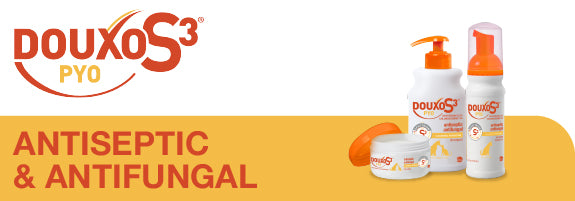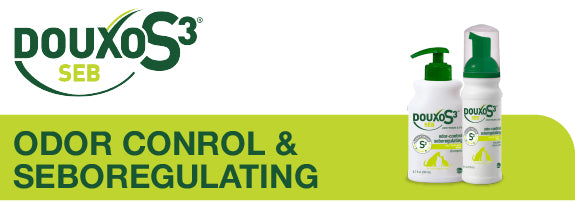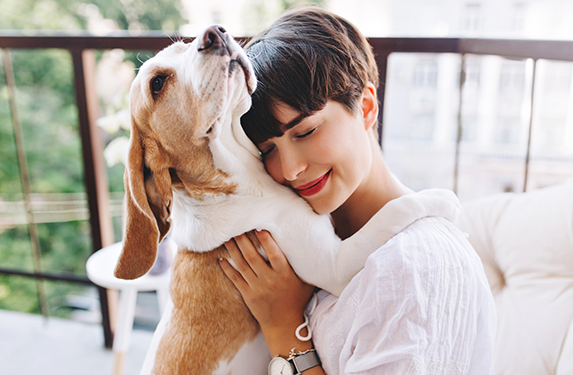Key Points
Common signs
Numerous causes
What to do
Treatment and prevention
Have you noticed your dog licking, scratching or chewing at a spot on their skin more than usual? Or have you seen a red, wet, angry patch of skin on your dog? Your pet may be suffering from a common skin complaint: the hot spot! Read on to learn more about what they are, how they can be treated and how we can try to stop them from happening in the first place.
What is a hot spot and what does it look like?
The official term for a hot spot is ‘acute moist dermatitis’, also called ‘pyotraumatic dermatitis’. Simply put, hot spots are skin complaints caused by self-inflicted trauma (excessive licking, chewing or scratching at the area) as a way to relieve itchy skin (pruritus) or to alleviate pain. These hot spots are localised areas of inflamed skin and can appear anywhere on the body, although typically, they will appear near the area of the underlying cause. They are usually acutely itchy, can become extremely sore and are often secondarily infected.
Acute dermatitis typically appears as red, wet, hot and angry areas of skin that can appear suddenly, usually in less than 36 hours. This is usually very itchy, even painful, and dogs can irritate them until they bleed. Hotspots can produce a sticky discharge which can then form a ‘crust’ over the affected area. Hotspots can be smelly and are usually obvious as they are red and hairless but can be more difficult to spot if hidden under adjacent long hair.
Patches of moist dermatitis often start very small and often near the area of the underlying cause and can be mistaken for a pimple or insect bite, but can get larger rapidly, especially if the dog is not prevented from scratching or licking at them. They range in size from a few millimetres across to huge sores taking up large areas of skin if left untreated.
When hot spots become infected, you will often notice papules (tiny, raised bumps on the skin) and pustules (small white bumps containing pus) around the edge of the hot spot.
What causes hot spots?
Acute moist dermatitis can affect any dog at any time, although dense coated breeds are more likely to be affected. They are also more prevalent in the warmer months than winter, due to the heat and humidity providing the perfect breeding ground for bacteria.
There are a variety of causes: anything which causes intense itch can lead to licking, chewing, scratching and therefore to damage to the skin.
Here are some common causes:
Flea allergic dermatitis (FAD – an allergy to flea saliva)
Otitis externa (outer ear infection)
Stress or boredom licking
Injuries and grazes which do not heal properly, sometimes due to licking and chewing by the pet
Contact irritants such as nettle stings or harsh chemicals
Anal sac impactions or infections
Musculo-skeletal conditions that are causing the dog pain
Acute moist dermatitis is uncomfortable, hot, itchy and sore for your dog. They then chew and scratch at the area, which actually just makes it worse as the skin becomes more inflamed and more bacteria are introduced. Unless this cycle is halted, the hotspot will get larger and deeper.
What to do?
Hot spots can quickly progress from small red spots to large areas of infected, sore skin. Early treatment is essential. If you think your dog has a hot spot, seek advice from your veterinary surgeon. Whilst waiting to see your vet, try and stop your dog from chewing or scratching the area.
How to treat and prevent hot spots?
How to treat hot spots in dogs?
Clipping:
Clipping hair away from the hotspot allows light and air in, and also makes cleaning and medicating the area easier.
Cleaning & healing:
Once your vet has examined your dog’s dermatitis, they may prescribe some treatment to clean and heal the area. Hot spot treatments are usually topical (applied directly to the skin) and may contain soothing molecules, antimicrobials (where infection is present), or a combination of both. Depending on the case, your veterinarian might prescribe oral or injectable medication in addition to stop itch such as corticosteroids. The hot spot will need to be cleaned, to remove dirt and saliva and to reduce the number of bacteria (if secondarily infected) causing the acute dermatitis. A product such as DOUXO® S3 CALM Pads would be a good choice to clean the area in absence of secondary infection.
Where infection is present, DOUXO® S3 PYO Pads containing chlorhexidine 3% can be used to disinfect. Topical products of the DOUXO® S3 line contain Ophytrium that is useful to soothe the skin as well as strengthening the damaged skin barrier.
Allowing healing:
Hot spots take time to heal, but if your dog continues to irritate at them then this process will be much slower, and the medications may be less effective. A body suit or a buster collar may be given to you for this purpose and must be worn at all times when your pet is unsupervised for a couple of days – even five minutes of self-trauma can do huge amounts of damage to healing skin!
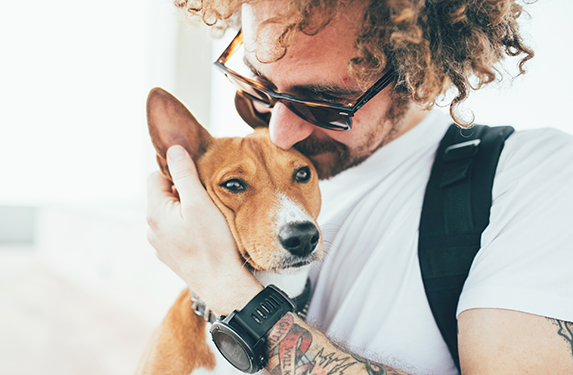
Can hot spots be prevented in dogs?
Acute moist dermatitis is commonly seen in veterinary practice, and can be a distressing and painful condition. Learning methods to try and prevent occurrence is a really valuable asset to pet owners. Good coat maintenance, being very vigilant about checking your dog’s coat, can be hugely helpful in preventing hot spots from growing and developing.
Rule out underlying causes:
Hot spots are more common in dogs with an underlying predisposition to itch and scratch. Something as innocuous as a flea bite can become a hot spot with the right conditions. Dogs with allergic skin disease are much more prone to chew and scratch at small, irritated areas of skin which can then quickly develop into hot spots. Using regular preventative anti-parasitic treatment is recommended. If allergic skin disease is suspected, ruling this in or out and treating appropriately should reduce the level of ‘itchiness’ which can predispose to hot spot formation, and improve your dog’s overall skin health.
For those dogs with allergies, DOUXO® S3 CALM line can help to maintain a healthy skin barrier and decrease itch and irritation in dogs with sensitive skin. If your dog licks or scratches more than you might think is normal behaviour, seek advice from your veterinary surgeon.
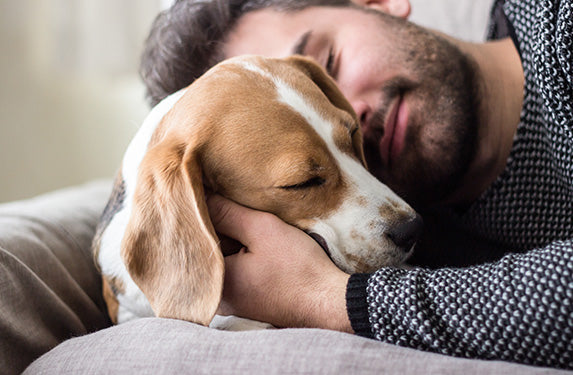
Maintain optimal skin and coat health
Keeping your dog’s skin and coat healthy and clean is recommended to prevent hot spots.
Depending on breed, keep their coat appropriately managed, cut or groomed, especially in the hotter months. Long and dense coats may need extra attention. Make sure your pet dries off properly after swimming or bathing so that the skin doesn’t remain moist for long periods of time.
Dogs who are prone to itchy or irritated skin may benefit from regular bathing and mousse application with a product such as DOUXO® S3 CALM , which can help soothe the skin and reduce the tendency for excessive scratching from your dog, which could then lead on to a hot spot.
Manage behavioural causes:
If you feel that your dog has a habit of excessive licking, chewing or scratching at times of stress or boredom, this can lead on to moist dermatitis. It can help to increase mental and physical stimulation through exercise and play, and providing them with a ‘safe space’ if they are prone to anxiety. Speak to a veterinary behaviourist if you feel this may be a concern with your pet.
We recommend
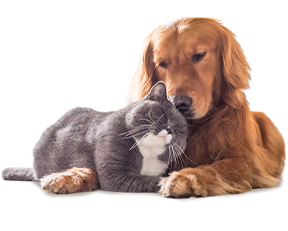
Find out the right product for your pet
Take the quizzSafe for you and your pet
Approved by pets and families
Recommended by veterinarians
If you notice your dog incessantly biting and scratching, accompanied by red and moist areas on his body, he might be suffering from acute moist dermatitis, commonly known as hot spots or yellow spots. This condition makes your furry friend’s skin sore and itchy, with various potential causes. It's crucial to have it examined by a veterinarian who can prescribe a hot spot treatment plan. Depending on your dog’s skin condition, the veterinarian might recommend complementing the plan with DOUXO® S3 PYO or DOUXO® S3 CALM products. The PYO line is specially developed to treat hot spots on dogs, using high-quality ingredients for maximum efficiency and safety. This routine targets bacterial overgrowth to efficiently reduce overgrowth. On the other hand, DOUXO® S3 CALM works to soothe the skin and significantly reduce itching and irritations. Trust DOUXO® S3 to help your dog overcome hot spots and recover a healthy and comfortable skin.


